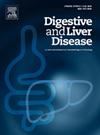Creatinine as a predictor of clinical events in Metabolic Dysfunction-Associated Steatotic Liver Disease
IF 4
3区 医学
Q1 GASTROENTEROLOGY & HEPATOLOGY
引用次数: 0
Abstract
Background
Metabolic dysnfuction-associated steatotic liver disease (MASLD) is the leading cause of chronic liver disease, and liver fibrosis is the primary predictor of liver-related events and mortality. Identifying patients at higher risk of progression is crucial for improving outcomes.
Aim
to characterize patients referred for hepatic steatosis to the Metabolic Clinic of AOU Policlinico of Modena with a minimum follow-up of 10 years and to assess the incidence and predictors of clinical events of interest.
Material and Methods
we prospectively enrolled all patients referred to the Metabolic Clinic for suspected NAFLD in the first years from its foundation (2011-2012). Retrospective data on cardiovascular events, liver-related events and mortality were collected. NITs for liver fibrosis were calculated and elastometric and histologic data were collected when available. Cox regression analysis was used to identify predictors of: 1) liver-related events, 2) cardiovascular events, 3) composite of death, hepatic decompensation, or cardiovascular events.
Results
the study population included 120 patients (33,3% females, mean age 53,32 ± 11,8 years). At baseline, 41 patients (37,3%) were obese (BMI of 29,02 ± 4,03), with T2DM, hypertension and dyslipidaemia prevalence of 14,2%, 26,7% and 76,7%, respectively (Figure 1). Over a mean follow-up of 11 years, 13 patients (10,8%) progressed to cirrhosis: 3 (5%) experienced hepatic decompensations, 3 developed HCC; 15 (12,5%) developed cardiovascular events, and 4 (3,3%) died.
Baseline Fib4 and APRI correlated with the composite outcome in univariate analysis, but not AGILE3. At the multivariate analysis, age, BMI and creatinine remained significant predictors (Figure2).
Conclusion
Creatinine levels may serve as an additional marker for identifying patients with MASLD who are at higher risk of clinical events, highlighting the possible, often subclinical, organ damage in this patient group.
求助全文
约1分钟内获得全文
求助全文
来源期刊

Digestive and Liver Disease
医学-胃肠肝病学
CiteScore
6.10
自引率
2.20%
发文量
632
审稿时长
19 days
期刊介绍:
Digestive and Liver Disease is an international journal of Gastroenterology and Hepatology. It is the official journal of Italian Association for the Study of the Liver (AISF); Italian Association for the Study of the Pancreas (AISP); Italian Association for Digestive Endoscopy (SIED); Italian Association for Hospital Gastroenterologists and Digestive Endoscopists (AIGO); Italian Society of Gastroenterology (SIGE); Italian Society of Pediatric Gastroenterology and Hepatology (SIGENP) and Italian Group for the Study of Inflammatory Bowel Disease (IG-IBD).
Digestive and Liver Disease publishes papers on basic and clinical research in the field of gastroenterology and hepatology.
Contributions consist of:
Original Papers
Correspondence to the Editor
Editorials, Reviews and Special Articles
Progress Reports
Image of the Month
Congress Proceedings
Symposia and Mini-symposia.
 求助内容:
求助内容: 应助结果提醒方式:
应助结果提醒方式:


